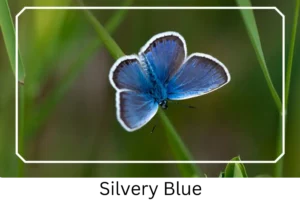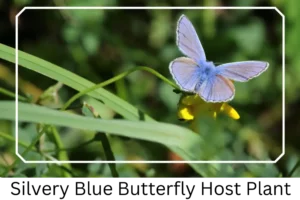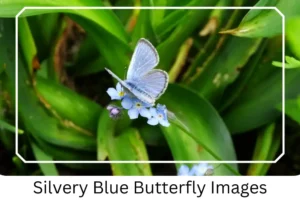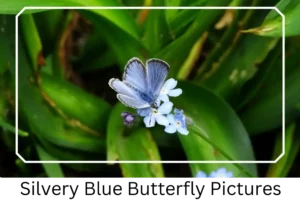Silvery Blue (Glaucopsyche lygdamus)
The Silvery Blue butterfly, known scientifically as Glaucopsyche lygdamus, is a captivating species that adorns the North American landscape. This guide delves into the intricacies of its life cycle, showcasing its beauty and the remarkable journey from caterpillar to butterfly. Renowned for its glossy blue wings and widespread presence across various habitats, the Silvery Blue is a testament to the diversity and splendor of nature’s creations.
Scientific Classification
- Family: Lycaenidae
- Genus: Glaucopsyche
- Scientific Name: Glaucopsyche lygdamus
Overview
The Silvery Blue butterfly exhibits a wide distribution across North America, thriving in a variety of environments from coastal dunes to lush meadows. It’s a species characterized by its adaptability and the vibrant colors it displays. This butterfly not only plays a crucial role in the ecosystem as a pollinator but also serves as a subject of fascination for both scientists and nature enthusiasts alike. Through understanding its life stages, habitat preferences, and behaviors, we gain insights into the complex web of life that sustains our natural world.
Description and Identification
Caterpillar
The caterpillar stage of the Silvery Blue is marked by a small, rugged green body, adorned with a distinctive maroon stripe running vertically down its back. These larvae share a symbiotic relationship with ants and are predominantly found feeding on the leaves of host plants, undergoing multiple molts during the summer before transitioning into pupae.
Pupa
The chrysalis phase features a light brown casing, subtly streaked with darker shades of brown. It serves as a protective enclosure during the winter, with the emergence of the adult butterfly signaling the arrival of warmer spring or summer months.
Adult Butterfly
Sexual Dimorphism: Sexual dimorphism is evident in adult Silvery Blues, with males showcasing shimmering silver-blue wings edged with thin dark lines, whereas females display wider borders.

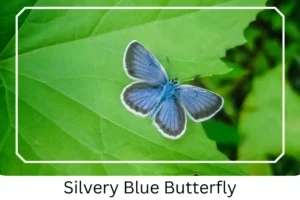 Color and Appearance: Upon opening their wings, males reveal a brilliant silver-blue sheen, while both genders have a white fringe along the wing edges. The underside of the wings presents a grayish-brown hue adorned with dark, white-bordered spots, providing camouflage against predators.
Color and Appearance: Upon opening their wings, males reveal a brilliant silver-blue sheen, while both genders have a white fringe along the wing edges. The underside of the wings presents a grayish-brown hue adorned with dark, white-bordered spots, providing camouflage against predators.
Average Wingspan: Adults boast an average wingspan ranging from 18 to 28 mm, allowing for agile flight.
Flight Pattern: The flight of the Silvery Blue is slow yet erratic, a dance that captivates onlookers with its unpredictability and grace.
Eggs
Eggs are delicately laid on the floral buds and young leaves of host plants, initiating the lifecycle anew with each generation.
Quick Facts | |
| Distribution | Extends from Alaska to Baja California in the west and across to Nova Scotia in the east. |
| Habitat | Inhabits meadows, open woods, coastal dunes, road edges, prairies, brushy fields, and moist rocky woods. |
| Lifespan of Adults | 2-3 weeks. |
| Host Plants | Prefers Lotus, Lupinus, Astragalus, Melilotus, Vicia, Oxytropis, Lathyrus, and other pea family species. |
| Adult Diet | Primarily nectar from flowers like Fiddleneck. |
How to Identify Silvery Blue Butterfly?
Identifying the Silvery Blue butterfly involves noting its unique coloration and patterns. Look for the shimmering silver-blue of the males’ open wings or the wider borders of the females. The underside of the wings displays a distinct grayish-brown color with round, dark spots framed in white, a characteristic feature across both sexes. Observing their flight pattern can also aid identification; despite their slow speed, Silvery Blues exhibit an erratic flight that distinguishes them from other species. Recognizing these butterflies in their natural habitats, from meadows to coastal dunes, enhances our appreciation of their beauty and ecological importance.
Did You Know?
- Silvery Blue butterflies engage in a behavior known as puddling, where males gather in large groups to extract minerals from moist soil.
- These butterflies exhibit an unusual tolerance towards human presence, allowing for close observations and making them excellent subjects for photography, especially during mating.
- The Silvery Blue is not just a marvel of nature for its aesthetic appeal but also plays a crucial role in pollination, contributing to the biodiversity and health of their habitats.
Conclusion
The Silvery Blue butterfly serves as a vivid reminder of the wonders hidden within our natural world. Through understanding their lifecycle, behaviors, and habitat needs, we not only gain a deeper appreciation for these delicate creatures but also recognize the importance of conserving the diverse environments they inhabit. As symbols of transformation and adaptability, Silvery Blues inspire us to continue exploring and safeguarding the natural beauty that surrounds us.
Silvery Blue Pictures

Scientific Classification

- Family: Lycaenidae
- Genus: Glaucopsyche
- Scientific Name: Glaucopsyche lygdamus

